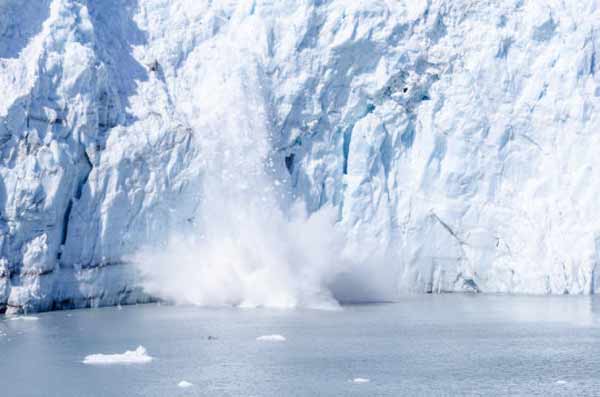Zurich, Switzerland (BBN)-A worldwide study has revealed that during 2001 to 2010, glaciers lost ice at an alarming two to three times the average for the 20th century.
Such is the scale of ice loss that the scientists predict that even if global warming were to stabilize, the ice loss would continue, reports The Times of India.
Melting glaciers, known to be caused by rising global temperatures, pose a global threat to fresh water systems, like rivers and lakes.
Billions of people live in plains fed by glacier and snow melt fed rivers, as in India.
If these rivers were to start drying up, there would be calamitous consequences as agriculture would collapse.
Data on glacier changes for the past more than 120 years was compiled by the World Glacier Monitoring Service, located at the University of Zurich.
In this study, observations of the first decade of the 21st century (2001-2010) were compared to all available earlier data from in-situ, air-borne, and satellite-borne observations as well as to reconstructions from pictorial and written sources.
The Service also collected data from its National Correspondents in more than 30 countries. The study is published in the Journal of Glaciology.
“The observed glaciers currently lose between half a metre and one metre of its ice thickness every year – this is two to three times more than the corresponding average of the 20th century”, explains Michael Zemp, Director of the World Glacier Monitoring Service and lead author of the study.
“Exact measurements of this ice loss are reported from a few hundred glaciers only. However, these results are qualitatively confirmed from field and satellite-based observations for tens of thousands of glaciers around the world.”
According to the international author team, the current rate of glacier melt is without precedence at global scale, at least for the time period observed and probably also for recorded history, as indicated also in reconstructions from written and illustrated documents.
In addition, the study shows that the long-term retreat of glacier tongues is a global phenomenon.
Intermittent re-advance periods at regional and decadal scales are normally restricted to a subsample of glaciers and have not come close to achieving the Little Ice Age maximum positions reached between the 16th and 19th century.
As such, glacier tongues in Norway have retreated by some kilometres from its maximum extents in the 19th century.
The intermittent re-advances of the 1990s were restricted to glaciers in the coastal area and to a few hundred metres.
In addition, the study indicates that the intense ice loss of the past two decades has resulted in a strong imbalance of glaciers in many regions of the world.
“These glaciers will suffer further ice loss, even if climate remains stable”, explains Michael Zemp.
BBN/SK/AD

No Subscription? You Are Missing Out!
Join the business leaders of Bangladesh who rely on BBN's original reporting and in-depth analysis on business scenario of the country. We send only one daily email. No Spam Guaranteed!









